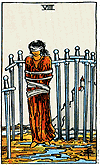... estão de volta.
I'm bored to death here. Não arranjo maneira melhor de o dizer do que em inglês.
As férias sempre foram aquela altura da minha vida em que me sentia mais sozinha. Toda a gente ia de férias e eu ficava. Sempre fiquei.
Agora já não é assim. Com a crise, as pessoas já não vão de férias. Mas eu fiquei à mesma. Que se podia fazer? Eu tinha de arranjar uma maneira de sobreviver sem as pessoas! Depois, quando elas voltaram, eu já não precisava delas. Óbvio. Claro como água.
Não sei se vou ler os comentários. Talvez leia, talvez não. Lamento dizê-lo mas não é assim tão importante o que as pessoas têm para me dizer.
Ultimamente também não tenho lido os vossos blogs (mas isso é porque ando sem paciência).
Já li "A Irmandade do Anel". Tornei-me uma fã de Tolkien. E agora estou a ler os livros apócrifos da Bíblia. Leitura interessante. E ando mais a ler livros. A situação do país está demasiado deprimente para falar dela ou ouvir falar dela.
A falta de compreensão dos outros também me aflige neste momento em particular. Sinto-me fraca e cansada. Quando os motivos para uma pessoa se levantar da cama se resumem a ter dinheiro para sobreviver, não há verdadeira razão para viver.
Mas onde é que já se viu um gótico feliz? Isso não existe. Isso seria a negação do gótico dentro do gótico.
Não espero que compreendam. Vou tentar ler os vossos comentários como se de um outro blog se tratasse. Podia pedir-vos por todos os santinhos e pelas alminhas do purgatório que pela vossa saúdinha não me falassem de coisas que não sabem, mas sei que não ia adiantar. As pessoas falam do que não sabem, ponto final. E eu não tenho paciência nem tempo nem vontade para dizer porque é que não sabem.
Mas não esperem nada de mim. Nunca. E este é o melhor conselho que vos posso dar.
Faço votos para que, como dizia o Klatuu, continuem a utilizar os meus comentários como plataforma para outras coisas. Eles são para vocês. O blog é para mim. Já uma vez o disse. Os comentários são o passeio da rua em frente à minha porta. Mas o blog é meu, meu, e só meu. Podia mesmo dizer que o blog sou eu, de tal forma me expus nestas páginas desde há mais de um ano.
Uma vez deram-me um puzzle. Na contracapa estava a fotografia de um chimpazé. O chimpazé seria o resultado do puzzle. Eu achei aquilo tão feio que não me dei ao trabalho de montar o puzzle e nunca mais ninguém me deu nenhum.
Mas eu adoro puzzles. Principalmente aqueles que não têm a fotografia do resultado.
Eu sou um puzzle desses, sem fotografia. E faltam peças. Essas estão fechadas na minha mão para as dar, uma por uma, às pessoas que começam a montar o puzzle e o acharem interessante.
Mas como não há fotografia prévia, muitos olham para duas ou três peças e pensam que sabem o que o puzzle vai dar, e enganam-se. Outros tentam começar a montá-lo mas percebem que é demasiado complicado e desistem. Outros gostariam de alterar o resultado final do puzzle e mudar o que eu sou, e esses falham. Outros julgam que têm o puzzle todo montado e surpreendem-se quando vêem uma das peças que não se revelam todos os dias. Conta-se pelos dedos de uma mão o número de pessoas que conseguiu montar o puzzle. Por motivos vários, como a idade, o estrato social, as vivências ou a falta delas, para a maioria das pessoas eu não sou um puzzle mas um enigma indecifrável. E no entanto eu digo-vos que não, que eu não sou um enigma indecifrável. Um puzzle complicado, isso sim.
E sinto-me isolada. Muito isolada. O que é diferente de sozinha. Isolada e sem ninguém que me compreenda. E sinto que me estou a impôr quando peço a alguém que me escute e compreenda. Não quero fazer isso. Quero ouvir música e dançar. Sim, é isso que eu quero. Os meus pensamentos bastam-me como sempre bastaram.
Estou cansada. Muito cansada. A vida não tem sido fácil, mas mesmo nada fácil. Nem justa. Nem agradável. Nos últimos tempos, tem sido penosa.
Eu culpo as minhas anteriores reencarnações.
Eh bien. C'est tout.




